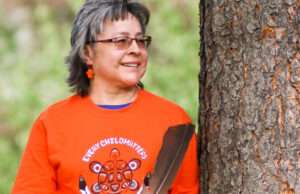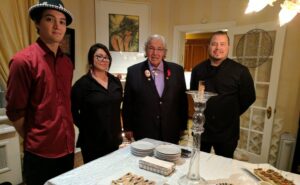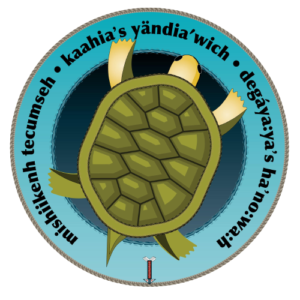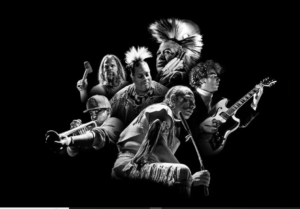Each year, September 30 marks the National Day for Truth and Reconciliation.
The day honours the children who never returned home and Survivors of residential schools, as well as their families and communities. Public commemoration of the tragic and painful history and ongoing impacts of residential schools is a vital component of the reconciliation process.
Wear orange – September 30 became known as Orange Shirt Day because of the experience of Phyllis Webstad, a Northern Secwpemc (Shuswap) from the Stswecem’c Xgat’tem First Nation (Canoe Creek Indian Band). On her first day of school, Phyllis arrived dressed in a new orange shirt, which was taken from her. It is now a symbol of the stripping away of culture, freedom and self-esteem experienced by Indigenous children over generations. On Sept. 30, Canadians are encouraged to wear orange to raise awareness of the tragic legacy of the Canadian Residential School System.
known as Orange Shirt Day because of the experience of Phyllis Webstad, a Northern Secwpemc (Shuswap) from the Stswecem’c Xgat’tem First Nation (Canoe Creek Indian Band). On her first day of school, Phyllis arrived dressed in a new orange shirt, which was taken from her. It is now a symbol of the stripping away of culture, freedom and self-esteem experienced by Indigenous children over generations. On Sept. 30, Canadians are encouraged to wear orange to raise awareness of the tragic legacy of the Canadian Residential School System.
Learn about the Residential School History and Truth and Reconciliation (Click here)
For a period of more than 150 years, First Nations, Inuit and Métis Nation children were taken from their families and communities to attend schools which were often located far from their homes. More than 150,000 children attended Indian Residential Schools. Many never returned.
Donate to Indigenous Organizations (Click here)
There are a number of wonderful charities, causes, and funds that can be donated to where the money will go toward helping to support Indigenous communities across the country.
Volunteer (Click here)
Find nonprofit and charity organizations near you, who need volunteers in areas such as addressing local water challenges in Indigenous communities, providing programs that support Indigenous spiritual, emotional, physical and mental well-being, and education.
Sign Petitions for Safe Drinking Water (Click here)
 Internationally, the right to water is recognized by the United Nations. It entitles everyone, without discrimination, access to safe, sufficient, physically accessible and affordable water. In Canada, while our water quality is ranked among the best in the world, First Nations across the country struggle to access a safe supply.
Internationally, the right to water is recognized by the United Nations. It entitles everyone, without discrimination, access to safe, sufficient, physically accessible and affordable water. In Canada, while our water quality is ranked among the best in the world, First Nations across the country struggle to access a safe supply.
First Nations face disproportionately higher numbers of drinking water advisories, and are subjected to these advisories for longer periods of time than non-Indigenous people. This is due to inadequate and chronic under-funding, regulatory voids and a lack of resources to support water management. The number of water-borne diseases in First Nations communities is 26 times higher than the national average, and people living on reserve are 90 times more likely to have no access to running water compared to non-Indigenous people in Canada. In many of these First Nations, water has elevated levels of heavy metals, including iron and manganese, and contaminants like E. coli.
Credit:
Mario Swampy, a council member from Samson Cree Nation, co-authored this article.
Kerry Black is assistant professor and Canada Research Chair, Integrated Knowledge, Engineering and Sustainable Communities, University of Calgary.
For full article go to: Tip of the iceberg: The true state of drinking water advisories in First Nations
Attend Indigenous Events (Click here)
Several upcoming festivals and events celebrate Indigenous culture and the contributions, accomplishments and talent of First Nations, Inuit and Métis Peoples in theatre, film, music, sport and science.






